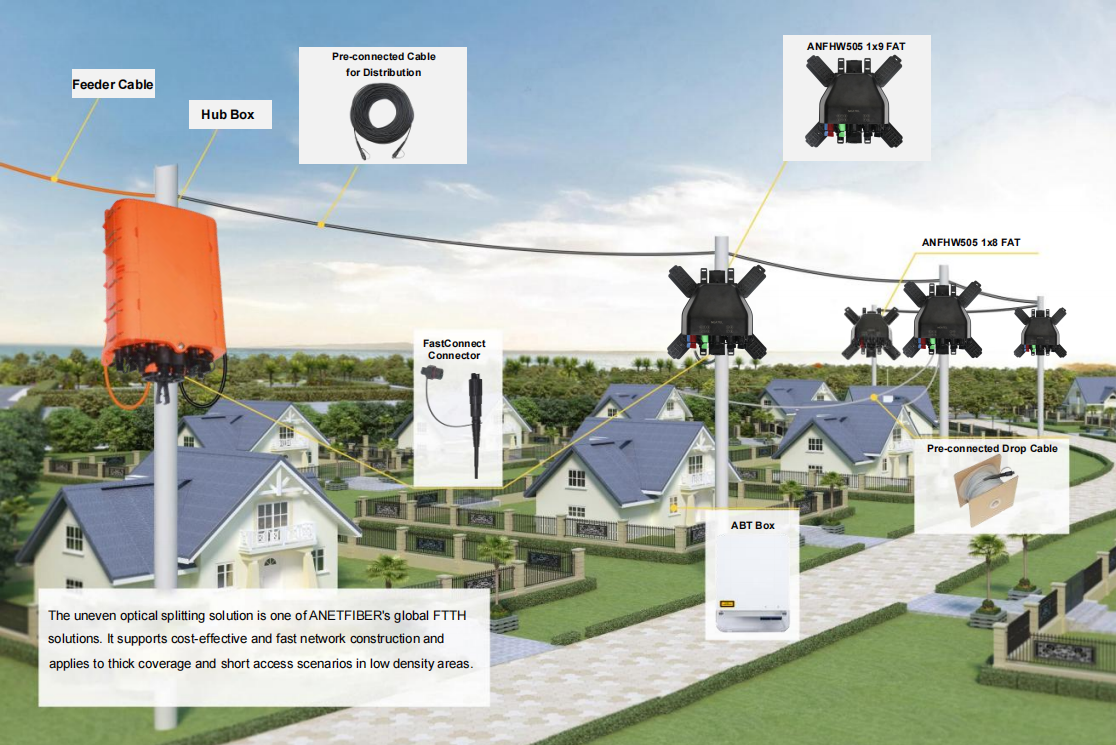What Are Distribution Boxes and Their Functions in Fiber Optics
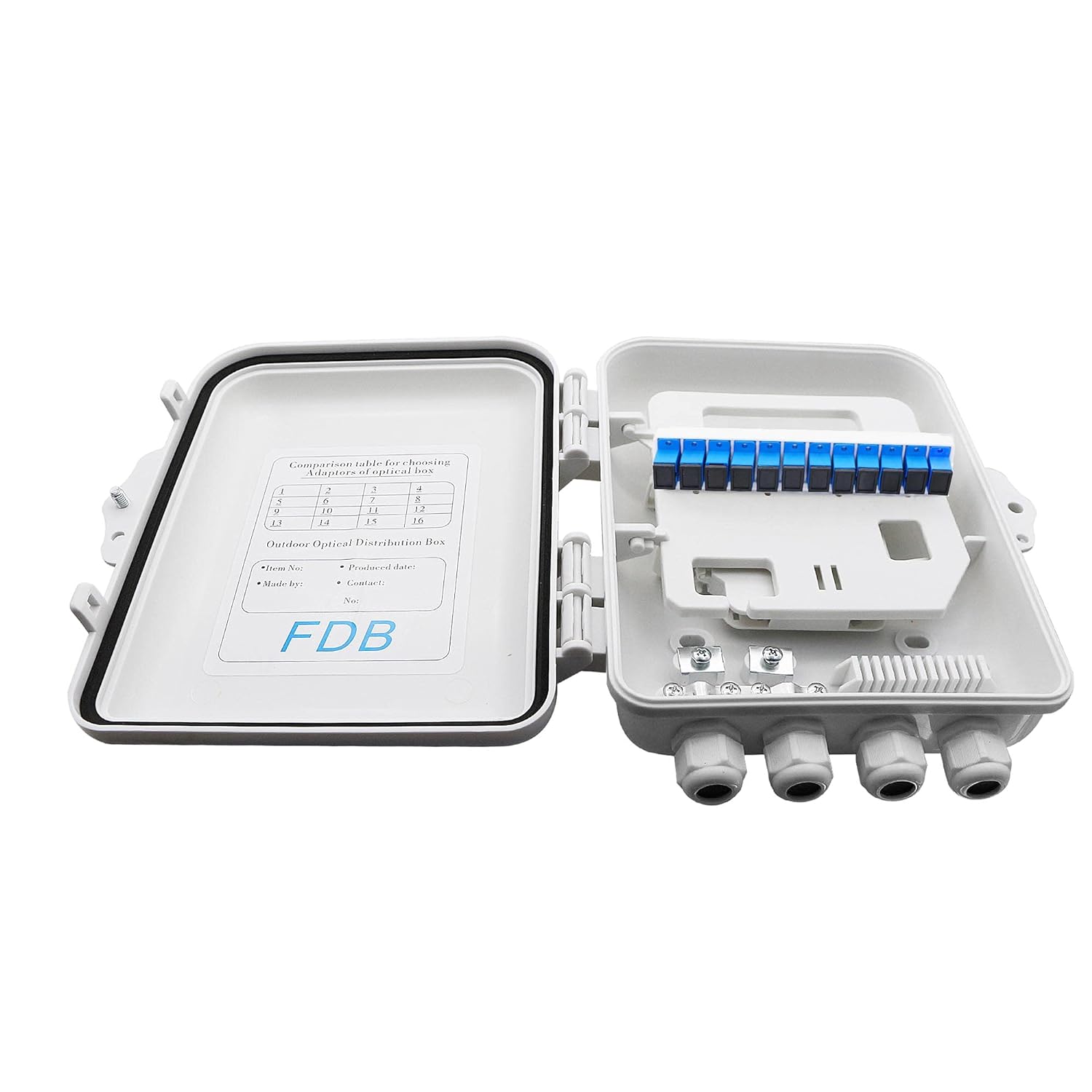
A distribution box serves as a critical component in fiber optic networks. This device provides a centralized location for terminating and connecting fiber optic cables, ensuring reliable and efficient connectivity between network components. The importance of a distribution box cannot be overstated. They protect delicate fibers from external factors and minimize signal loss. With features like IP68 waterproof ratings, fast connectors, and hardened adapters, distribution boxes enhance data transmission by offering proper termination points and environmental protection. These boxes play an essential role in modern telecommunications, supporting high-density optical fiber wiring and facilitating network scalability.
Understanding Distribution Boxes
Definition and Purpose
What is a Distribution Box?
A distribution box serves as a central point for managing and distributing fiber optic cables. This device ensures reliable and efficient connectivity between various network components. The distribution box provides a secure environment for splicing, terminating, and organizing fiber optic cables.
Why are Distribution Boxes Important?
Distribution boxes play a crucial role in modern telecommunications systems. These boxes protect delicate fibers from environmental and mechanical damage. The IP68 waterproof rating ensures resistance to water and dust, enhancing durability. Fast connectors and hardened adapters streamline the connection process, reducing signal loss and improving data transmission quality.
Components of Distribution Boxes
Enclosure
The enclosure houses all internal components of the distribution box. It provides protection against external elements, ensuring the longevity and reliability of the fiber optic connections. The enclosure often features an IP68 waterproof rating, making it suitable for various environmental conditions.
Splice Trays
Splice trays organize and protect spliced fiber optic cables within the distribution box. These trays ensure that splices remain secure and free from damage. Proper organization within splice trays minimizes signal loss and maintains high-quality data transmission.
Connectors and Adapters
Connectors and adapters facilitate the connection of fiber optic cables within the distribution box. Fast connectors enable quick and efficient cable termination, while hardened adapters provide robust and stable connections. These components are essential for maintaining the integrity and performance of the fiber optic network.
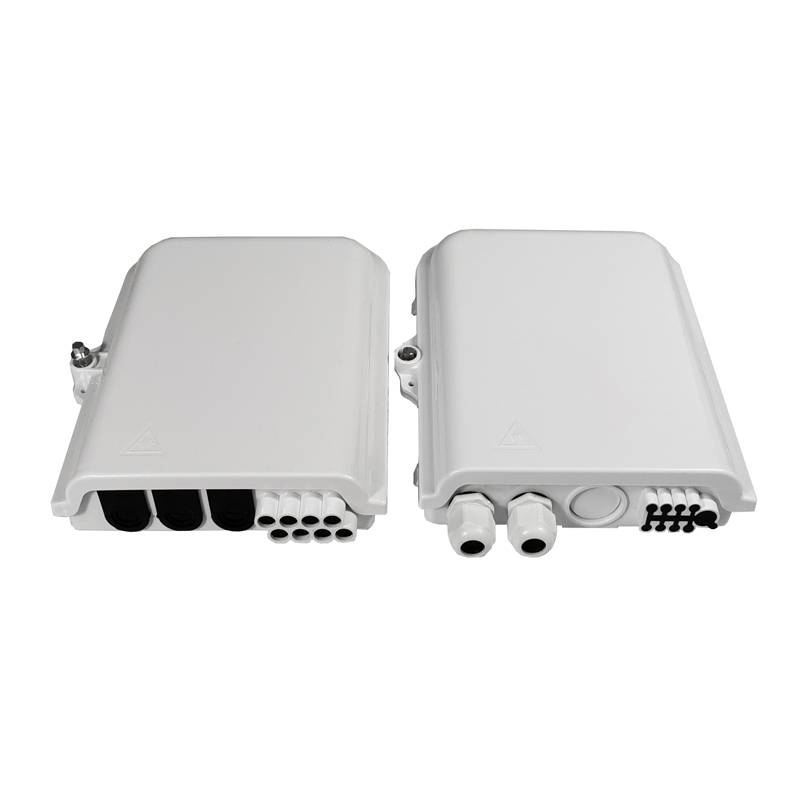
Types of Distribution Boxes
Wall-Mounted Distribution Boxes
Wall-mounted distribution boxes are installed on walls, making them ideal for indoor use. These boxes provide easy access for maintenance and upgrades. Wall-mounted options are commonly used in residential and commercial settings.
Pole-Mounted Distribution Boxes
Pole-mounted distribution boxes are attached to utility poles, making them suitable for outdoor applications. These boxes offer protection against harsh environmental conditions. The IP68 waterproof rating ensures durability and reliability in outdoor settings.
Underground Distribution Boxes
Underground distribution boxes are buried below ground level, providing a discreet and secure solution for fiber optic cable management. These boxes are designed to withstand underground conditions, offering robust protection for the network components.
Functions of Distribution Boxes in Fiber Optics
Protection of Fiber Optic Cables
Environmental Protection
Distribution boxes provide essential protection for fiber optic cables against environmental factors. The IP68 waterproof rating ensures that the enclosure resists water and dust. This feature is crucial for outdoor installations where environmental exposure can degrade cable performance. The robust design of the distribution box shields the delicate fibers from moisture, dirt, and other contaminants. This protection extends the lifespan of the fiber optic network.
Mechanical Protection
Mechanical protection is another vital function of distribution boxes. The sturdy construction of the enclosure safeguards the cables from physical damage. This includes protection from impacts, vibrations, and other mechanical stresses. Fast connectors and hardened adapters within the box ensure stable and secure connections. These components prevent accidental disconnections and reduce signal loss. The distribution box thus maintains the integrity of the fiber optic network.
Organization and Management
Cable Management
Effective cable management is a key function of distribution boxes. The internal layout of the box organizes the fiber optic cables neatly. Splice trays and connectors help in arranging the cables systematically. This organization minimizes clutter and makes it easier to identify and access specific cables. Proper cable management reduces the risk of tangling and damage, ensuring smooth data transmission.
Splicing and Termination
Splicing and termination are critical processes in fiber optic networks. Distribution boxes provide a controlled environment for these activities. Splice trays within the box hold the spliced fibers securely. This arrangement prevents movement and potential damage to the splices. Fast connectors facilitate quick and efficient cable termination. This setup enhances the overall performance and reliability of the network.
Accessibility and Maintenance
Ease of Access
Ease of access is a significant advantage of using distribution boxes. The design of the box allows technicians to access the internal components easily. This accessibility simplifies the process of inspecting and maintaining the fiber optic cables. Wall-mounted and pole-mounted distribution boxes offer convenient access points for both indoor and outdoor installations. This feature is particularly beneficial for routine maintenance and troubleshooting.
Simplified Maintenance
Simplified maintenance is another important function of distribution boxes. The organized layout and accessible design make it easier to perform repairs and upgrades. Hardened adapters and fast connectors within the box streamline the maintenance process. These components allow for quick replacements and adjustments without disrupting the entire network. Simplified maintenance reduces downtime and ensures continuous network performance.
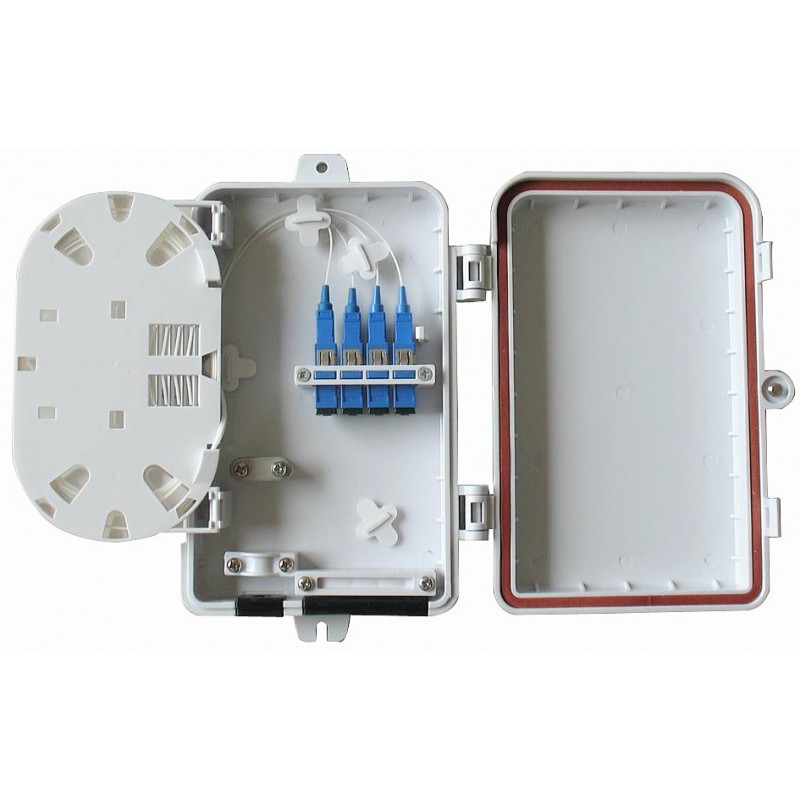
Materials and Quality Considerations
Common Materials Used
Plastic
Plastic serves as a popular material for fiber distribution boxes. Manufacturers prefer plastic due to its lightweight nature and cost-effectiveness. Plastic enclosures offer excellent resistance to corrosion, making them suitable for various environmental conditions. The flexibility of plastic allows for easy customization to meet specific design requirements. Plastic distribution boxes often feature UV-resistant properties, enhancing their durability in outdoor installations.
Metal
Metal enclosures provide robust protection for fiber optic components. Aluminum and stainless steel are common choices for metal distribution boxes. These materials offer superior strength and durability, ensuring long-term reliability. Metal enclosures excel in harsh environments, providing excellent resistance to physical impacts and extreme temperatures. The conductive properties of metal also offer additional shielding against electromagnetic interference, which can enhance signal integrity.
Quality Standards
Industry Standards
Adherence to industry standards is crucial for the performance and safety of fiber distribution boxes. Standards such as the Telecommunications Industry Association (TIA) and the International Electrotechnical Commission (IEC) set guidelines for design, manufacturing, and testing. Compliance with these standards ensures that distribution boxes meet the necessary performance criteria. Industry standards cover aspects like environmental protection, mechanical strength, and optical performance.
Testing and Certification
Testing and certification play a vital role in ensuring the quality of fiber distribution boxes. Manufacturers subject distribution boxes to rigorous testing to verify their compliance with industry standards. Tests include environmental simulations, mechanical stress tests, and optical performance evaluations. Certification from recognized bodies, such as UL or CE, provides assurance of the product's reliability and safety. Certified distribution boxes guarantee consistent performance and durability in real-world applications.
Applications of Distribution Boxes
Residential Applications
Home Fiber Networks
Distribution boxes play a crucial role in home fiber networks. These boxes ensure reliable and efficient connectivity for residential users. The distribution box provides a centralized location for terminating and connecting fiber optic cables. This setup enhances signal integrity and promotes network scalability. Homeowners benefit from high-speed internet and seamless data transmission. The IP68 waterproof rating of the enclosure ensures durability in various environmental conditions. Fast connectors and hardened adapters facilitate quick and stable connections, reducing signal loss.
Commercial Applications
Office Buildings
Office buildings rely on distribution boxes for robust and efficient telecommunications infrastructure. These boxes manage and distribute fiber optic cables throughout the building. The centralized management provided by the distribution box ensures consistent and high-quality data transmission. Office environments demand reliable connectivity for various applications, including video conferencing, cloud computing, and data storage. The IP68 waterproof rating protects the internal components from dust and moisture. Fast connectors and hardened adapters streamline the installation and maintenance processes, ensuring minimal downtime.
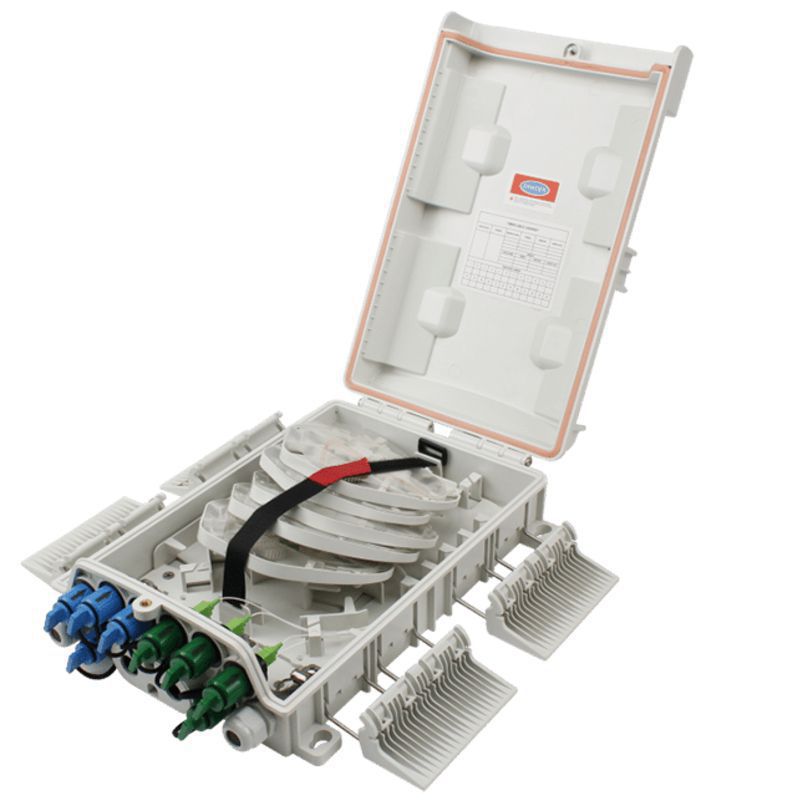
Industrial Applications
Factories and Plants
Factories and plants require durable and reliable distribution boxes to support their fiber optic networks. These industrial settings often face harsh environmental conditions and mechanical stresses. The distribution box provides robust protection for fiber optic cables, ensuring stable and efficient connectivity. The IP68 waterproof rating and sturdy construction safeguard the internal components from water, dust, and physical impacts. Fast connectors and hardened adapters enable quick and secure cable terminations, reducing the risk of signal loss. The organized layout within the distribution box simplifies maintenance and upgrades, ensuring continuous network performance.
Future Trends in Distribution Boxes
Technological Advancements
Smart Distribution Boxes
Smart distribution boxes represent a significant leap in fiber optic technology. These advanced units integrate intelligent features to enhance network performance and management. Smart distribution boxes include sensors that monitor environmental conditions such as temperature and humidity. This real-time data helps in maintaining optimal operating conditions for fiber optic cables.
Automation plays a crucial role in smart distribution boxes. Automated systems can detect faults and initiate corrective actions without human intervention. This feature reduces downtime and ensures continuous network performance. Remote monitoring capabilities allow technicians to oversee multiple distribution boxes from a centralized location. This capability streamlines maintenance and reduces operational costs.
Integration with Internet of Things (IoT) devices further enhances the functionality of smart distribution boxes. IoT integration enables seamless communication between network components. This connectivity improves data transmission efficiency and network reliability. The modular design of smart distribution boxes supports scalability, making them future-proof solutions for expanding networks.
Market Trends
Increasing Demand
The demand for fiber optic distribution boxes continues to rise. Several factors contribute to this growing demand. The proliferation of high-speed internet services drives the need for robust and reliable fiber optic networks. Residential, commercial, and industrial sectors all require efficient data transmission solutions.
Telecommunications companies invest heavily in upgrading their infrastructure. Fiber optic distribution boxes play a pivotal role in these upgrades. The scalability and future-proofing capabilities of these boxes make them ideal for long-term investments. Efficient cable management and cost-effective connectivity solutions further boost their appeal.
Government initiatives to improve digital infrastructure also fuel the demand for fiber optic distribution boxes. Many countries implement policies to expand broadband access to underserved areas. These initiatives require extensive deployment of fiber optic networks. Distribution boxes ensure the stability and performance of these networks.
In conclusion, technological advancements and market trends indicate a bright future for fiber optic distribution boxes. Smart distribution boxes and increasing demand highlight the importance of these components in modern telecommunications.
Fiber optic distribution boxes serve as the backbone of modern telecommunications systems. These boxes protect fiber optic cables from environmental and mechanical damage. Effective cable management and secure splicing enhance data transmission quality. Distribution boxes offer scalability and future-proofing capabilities for expanding networks. The demand for these components continues to rise due to increasing internet usage and infrastructure upgrades. Technological advancements, such as smart distribution boxes, promise further improvements in network performance. Fiber optic distribution boxes will remain crucial for reliable and efficient connectivity in the digital era.
See Also
Understanding Single Mode Fiber Optic Cables for FTTH
2024: Understanding the Capacity of Outdoor Water-proof FTTH Distribution Terminal Box with 24 Ports
2024 Guide: Understanding FTTH Terminal Box and Optical Accessories
Exploring the Differences Between Single Jacket and Dual Jacket Outdoor Optical Cables
2024 Comparison of FBT vs PLC Splitters: Signal Distribution Performance
About US
Follow Us
AnetFiber company's main products are indoor and outdoor optical fiber cables, outdoor waterproof pre-connected fiber-to-the-home products, PLC optical fiber splitters, optical fiber jumpers and pigtails, MTP®/MPO high-density big data product solutions, optical fiber field quick connectors and research and development molding, injection molding and production of optical fiber distribution boxes, optical fiber chassis cabinets, the market has expanded to the world, Europe, America, Asia, the Middle East and Latin America.
Address
Shenzhen City, Baoan District, Yanluo Street, Tangxiayong Community, Yangyong Industrial Road, Tonggangda New Energy Vehicle Park 406
Contacts
+86 199 2655 3586
